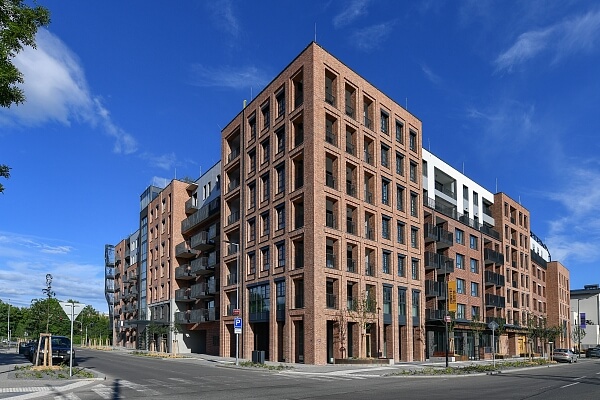Svoboda & Williams’ Projects Win Real Estate Awards Prizes

The twentieth annual Real Estate Market conference took place on Wednesday, October 20th. Organized by the Stavební forum online magazine, its four panel discussions brought together experts across the spectrum of the real estate market, who looked back at what happened over the past year and outlined the changes brought about and accelerated by the pandemic and the Green New Deal.
The first panel discussion, Offices and Retail: The New Reality, featured a presentation on coworking and shared offices by Kateřina Burešová, a Flexible Workspace Consultant at Svoboda & Williams. She and the other panelists agreed that the home office isn’t a sustainable way to work in the long term, but that new workspaces will need to reflect tenants’ demands for an environment that they’ll look forward to return to. Shared offices offer increasingly sought-after flexible options, while at the same time space where people can meet spontaneously. “Shared offices are no longer seen as a “new age” way of working and should now be an integral part of every modern office building in the future, like a canteen, for instance,” said Burešová.
Jana Vlková, Director of Workplace Advisory at Colliers International, pointed out that, on the one hand, it’s important for new offices to be designed as an experience and for workspaces to be as pleasant as possible, on the other hand people need to feel that if they don’t go to the office, they’ll miss out on something because they won’t get to take part in everyday informal meetings. Petr Palička, Country Managing Director at Penta Real Estate, mentioned several examples of current office space developments. Looking back on the last several months, demand for offices is still high, but tenants’ requirements are changing. They want more communal spaces, terraces, greenery, and the building’s integration into the city infrastructure.
Petr Zahálka, Sales Director of ProInterier, together with Leoš Andrle, Executive Director of Sekyra Group, commented on the construction and fit-out of office space from the implementation end. Due to rising construction costs, tenants are trying as much as possible to save on office furniture, and the situation is made even more complicated by the shortages in technologies and materials, which many projects have had to contend with.